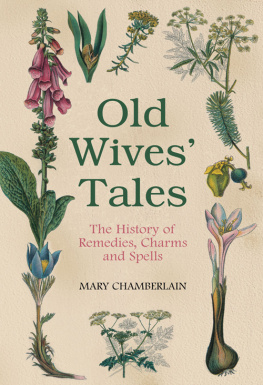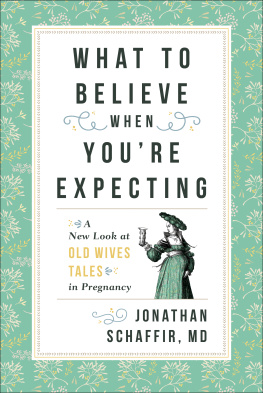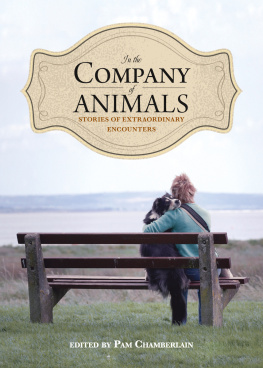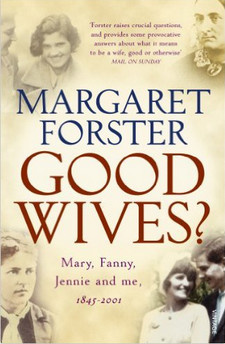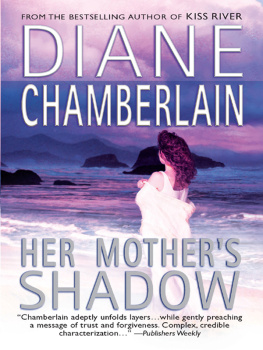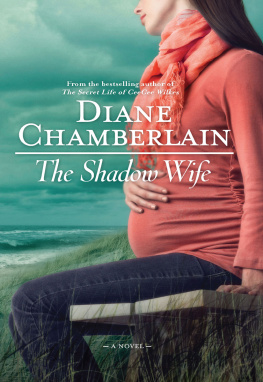Mary Chamberlain - Old Wives Tales
Here you can read online Mary Chamberlain - Old Wives Tales full text of the book (entire story) in english for free. Download pdf and epub, get meaning, cover and reviews about this ebook. year: 2011, publisher: The History Press, genre: Religion. Description of the work, (preface) as well as reviews are available. Best literature library LitArk.com created for fans of good reading and offers a wide selection of genres:
Romance novel
Science fiction
Adventure
Detective
Science
History
Home and family
Prose
Art
Politics
Computer
Non-fiction
Religion
Business
Children
Humor
Choose a favorite category and find really read worthwhile books. Enjoy immersion in the world of imagination, feel the emotions of the characters or learn something new for yourself, make an fascinating discovery.
- Book:Old Wives Tales
- Author:
- Publisher:The History Press
- Genre:
- Year:2011
- Rating:5 / 5
- Favourites:Add to favourites
- Your mark:
- 100
- 1
- 2
- 3
- 4
- 5
Old Wives Tales: summary, description and annotation
We offer to read an annotation, description, summary or preface (depends on what the author of the book "Old Wives Tales" wrote himself). If you haven't found the necessary information about the book — write in the comments, we will try to find it.
Old Wives Tales — read online for free the complete book (whole text) full work
Below is the text of the book, divided by pages. System saving the place of the last page read, allows you to conveniently read the book "Old Wives Tales" online for free, without having to search again every time where you left off. Put a bookmark, and you can go to the page where you finished reading at any time.
Font size:
Interval:
Bookmark:
Old
Wives
Tales
The History of
Remedies, Charms
and Spells
Old
Wives
Tales
The History of
Remedies, Charms
and Spells
MARY CHAMBERLAIN

First published in 1981
This edition published in 2010
The History Press
The Mill, Brimscombe Port
Stroud, Gloucestershire, GL 5 2 QG
www.thehistorypress.co.uk
This ebook edition first published in 2012
All rights reserved
Mary Chamberlain, 1981, 2006, 2010, 2012
The right of Mary Chamberlain to be identified as the Author of this work has been asserted in accordance with the Copyrights, Designs and Patents Act 1988.
This ebook is copyright material and must not be copied, reproduced, transferred, distributed, leased, licensed or publicly performed or used in any way except as specifically permitted in writing by the publishers, as allowed under the terms and conditions under which it was purchased or as strictly permitted by applicable copyright law. Any unauthorised distribution or use of this text may be a direct infringement of the authors and publishers rights, and those responsible may be liable in law accordingly.
EPUB ISBN 978 0 7524 8679 6
MOBI ISBN 978 0 7524 8678 9
Original typesetting by The History Press
For Rosie and Kate
Acknowledgements
I would like to thank first and foremost my husband, Peter Lane, who not only gave me invaluable practical and moral support through the writing of this book, but also advised and criticised my ideas and drafts with judgement and infinite patience. I would also like to thank Carol Fisher for her helpful comments on all the drafts, Anna Coote and Ann Oakley for their criticisms of the final draft and Ursula Owen at Virago for all her help in the compiling and writing of the book.
I am indebted to Belinda Ackerman of the Association of Radical Midwives, Philip Corrigan, Auriel Hill of the Association for the Improvement in Maternity Services, Jane Mace, Nancy MacKeith, Angela Phillips and Kathy Savage for their comments and contributions to individual chapters. In addition, James Cornford, Kevin Crossley-Holland, Jean Donnison, Roger Fieldsend, Mike Fisher, Alastair Kerr, Arthur Lane, Alan Maryon-Davis, John Pickstone, Enid Porter, Bill Williams, Bob Williamson, the staff of the Department of Egyptian Antiquities of the British Museum, and the staff of the Library of the Wellcome Institute for the History of Medicine, all helped direct me to sources or answered questions and to them I am grateful.
I also owe a debt to the East Suffolk Federation of Womens Institutes, whose members contributed enormously to the collection of remedies, to Radio Orwell for inviting me to do a phone-in programme on Old Wives Tales, to Lambeth Social Services for allowing me to interview residents in their Homes for the Elderly and to the residents themselves, to the Matron and residents of Glebe House, Woodbridge, Suffolk (Suffolk Social Services) for the same, to Mrs Coker, Mrs Copping, Mrs Heiser, Mrs Murray, Mr Stronger and Mrs Wallace for their interviews, and to the Earl of Albemarle, Mr Richard Allnutt, Lt Col. R.B. Longe, the Earl of Stradbroke and the Suffolk Record Office for permission to use their material on remedies. There are many other people to whom I have spoken throughout the research for this book and who, wittingly or unwittingly, have given me material and thanks are due to them.
Finally, I must thank my aunt, Lilian Hewson, who told me a great deal about my great-grandmother, and my parents who told me many old wives tales as well as looking after my children at various stages in writing the book. To them I am especially grateful.
Mary Chamberlain,
London 1981
PART ONE
Old Wives

ONE
Introduction

THEY CALLED MY GREAT-GRANDMOTHER the Angel of Alsace Street. 1 If anyone was in labour, she would be there with her basins and rags delivering the babies and attending the mothers. If anyone was sick, the first person they would fly to was old grandma. When neighbours died, she laid them out. She took care of her local community in birth and death, and for much of the period in between. And she did this for little or no remuneration.
She was an old wife, a handywoman. My great-grandmother, and others like her, were familiar figures in most working-class communities until well into this century. They were the usual resort for the sick and poor. Doctors existed, but they were often too expensive for the family budget, or simply unpopular. In preference, the first treatment for the sick was usually at home, with the advice of a wise and trusted neighbour.
Some old wives, like Mrs Mapp, the eighteenth-century bone-setter from Epsom, or Margaret Kennox, the Elizabethan herbalist, acquired legendary fame; but for the most part they were local figures, often indistinguishable from other members of the community. What skills or knowledge they possessed they held inter-alia. For they were also mothers and workers. In 1894 in Whitechapel, for instance, a poor woman
aged nineteen was dying of blood poisoning a month after delivering herself of a still born child. A doctor was summoned, but when he found he was not to be paid refused to do anything and left. The Poor Law medical officers locum was then called but he refused to help without a fee or a Relief Order. During this month and for twenty days afterwards, the womans only attention came from a handywoman at a nearby newsvendors shop.2
On the whole, the old wife did not earn her living exclusively from her practice, and she held no formal qualifications. Entry into the ranks of the old wives was achieved through experience or a form of apprenticeship. My great-grandmother had sixteen children, and this was deemed sufficient qualification. Another woman, Mrs Coker, though she ultimately entered service, began a midwifery apprenticeship under her mother, an old wife, in the 1890s. This is how she described it:
Of course there was no help in those days, it was all home nursing, no hospital. Its all so different now. They just used to send for her. Sometimes I think thats how she got her asthma, getting out of a hot bed and going out in the streets in the middle of the night to these people.
I used to watch her bringing the baby into the world and cut the cord. I know I wasnt very old but I was quite capable. I could now, if necessary. Nobody about and anyone was in trouble I could help She was a marvellous midwife. They told her she got the nerve of a thousand people because she had her photo taken with two dead babies in her arms. Well, I take after her for nerves. Nothing has ever feared me.
What you need most is nerve. Id go with her, and rub their backs and keep them walking. It was important to keep them walking, helped speed up the labour 3
Not all old wives were midwives. Some were general healers and others held quite specific skills, like wart-charming. Those specific skills which required little basic knowledge were often surrounded in mystery and secrecy, and would be passed down through families. A Suffolk wart-charmer explained:
I learnt the cure from my aunt, before she died she told me. She didnt like to feel that it was lost. So she told me how to do it up. It seems to work, it seems to have cured everybody that Ive given it to. My aunt always said you mustnt tell anybody what you put in it, but she thought it was a shame to lose it, thats why she passed it on to me 4
Charming burns was often likewise shrouded in secrecy and, particularly in rural areas in the nineteenth century and earlier, certain individuals were believed to hold special properties of healing and prophecy. The seventh daughter of a seventh daughter was often sought out for these skills.
Next pageFont size:
Interval:
Bookmark:
Similar books «Old Wives Tales»
Look at similar books to Old Wives Tales. We have selected literature similar in name and meaning in the hope of providing readers with more options to find new, interesting, not yet read works.
Discussion, reviews of the book Old Wives Tales and just readers' own opinions. Leave your comments, write what you think about the work, its meaning or the main characters. Specify what exactly you liked and what you didn't like, and why you think so.

